At the end of every December, we take a look back at the top stories of the year. While each year's reader favorites always unsurprisingly contain a few stories from each of the areas we focus on most intently here at Hatch Magazine—namely conservation journalism, stories about gear, tips on how to become a better angler and so on—there are always a few stories that grab readers more than we expect them to.
Here are 2019's reader favorites, the 10 Hatch Magazine stories of this past year that saw more eyes than all the others. Our team of editors and contributors has also compiled its list of 2018 favorites, stay tuned for that look back at the past year.
- The key to becoming a better fly angler
- When did using a dropper become taboo?
- Yellowstone's wild trout
- Not on my pants, not again
- Fly casting for beginners
- Fly fishing books everyone should read
- The media keeps ignoring the greatest existential threat to mankind
- A brown trout quirk
- Review: Orvis Clearwater fly rod and reel
- The descent of Ducks Unlimited
Todd Tanner, a former guide, regular columnist here at Hatch Magazine, and who runs The School of Trout—a stellar, bi-annual gathering (on the shores of the famed Henry's Fork) of some of fly fishing's most celebrated and accomplished instructors—is no stranger to offering anglers advice on ways to up their game. From reading water to fly selection to understanding leaders and tippet and more, Todd has been sharing his thoughts on how to find more success and enjoyment on the water for decades. So what, in his opinion, is the number one key to becoming a better angler? Chances are, it's just what you think it is (but don't want to admit)..
If there's one thing some fly anglers aren't known for, it's for keeping their mouths shut about the way other people catch fish. And to make matters worse, these anglers don't even reserve their unwelcome and unnecessary judgement for those that commit the supposedly grave sin of fishing with conventional gear—they'll even offer their self-righteous criticisms to other fly anglers. It's a phenomenon that often seems to know no bounds. Case in point, Chris Hunt's article from earlier this year, where he asks, "When did using a dropper become taboo?"
Yellowstone National Park is one of America's fly fishing meccas. And with good reason. Rivers, chock full of wild trout, like the Madison, Gibbon, Gallatin, Firehole, Lamar and, of course, the Yellowstone, course within its protected boundaries and offer anglers some of the most pristine and undisturbed fishing experiences available in the continental United States. While there is seemingly an endless list of articles and stories written about Yellowstone and it's trout, few take the time to explore the history of the park's fish—which offer anglers invaluable insight (and more than a few surprises) of how fishing in Yellowstone became what it is today.
Chances are you've read a few stories that round up the happenings at each year's circuit of The Fly Fishing Show—which takes place during the early year winter months when most anglers spend their time tying flies and reading John Geirach novels instead of hitting the water. Admittedly, many of these stories aren't terribly exciting, including ones we've produced over the years. But photographer and writer James Joiner's recount of "a totally meaningless journey down the eastern seaboard," between Fly Fishing Show stops in Edison, New Jersey and Atlanta, Georgia, with a musky outing sandwiched in between, captivated readers this year. No doubt thanks in part to James' stellar imagery.
Spoiler alert: if you've skipped ahead and don't want to know what the aforementioned key to becoming a fly angler is, skip ahead again right now. Because it's fly casting. And because fly casting is so important to success on the water, we publish a lot of articles that seek to help our readers improve their casting, including this reader favorite from 2019 which offers up 5 things you need to know to improve your casting.
Winter is the perfect time to catch up on your fly fishing reading. And so, what better time than late December to revisit Spencer Durrant's list of essentials of fly fishing literature?
"The media," Chris Madson writes, "choose to treat climate change as a third-rate topic. I’ve been in the business of communication for forty years—I get the need to build audience—but I also know there is a responsibility to give the really big stories the attention they deserve, whether the public has an interest or not. If that means there’s less coverage of the Super Bowl or the Oscars or this year’s fashion trends from Paris, if it means that this morning’s Trump tweets end up next to the comics, then that’s what it means. Sure, we all need a respite from the day-to-day frustrations and disappointments of life. We could all use a break. But there’s an asteroid coming ..."
John Juracek, author, photographer and longtime partner at West Yellowstone's Blue Ribbon Flies, has spent a lifetime chasing and observing trout. Including brown trout. And, writes John, "While so engaged, I’ve been reminded countless times of a feeding quirk particular to this species." John's description of this behavior that is unique to brown trout, sparked a bevy of interest and conversation amongst our readers.
Even in today's world of fly fishing which, while still sorely lacking in all forms of diversity is still wildly more diverse than just a decade or two ago, there's still a conventional "wisdom" floating around that tells us that sport of fly fishing is still really just a bunch of old, rich, white dudes. Well, we don't buy it. Why? Because our eyes and ears tell us differently. These days, fly fishing media is targeted more and more towards younger audiences, we hear year after year that women's fly fishing gear continues to be the fastest growing segment in the market, it's plain to see that many of the voices and personalities that are most prominent in the fly fishing world these days are both generational and gender diverse, and each year, many of the most popular—and best-selling—products in the fly fishing world are targeted at "everyday" anglers that can't afford rods and reels that come with $1,000 price tags attached to them. Helping to confirm that last point is the immense popularity of our springtime review of Orvis' Clearwater fly rod and reel outfit—a lineup of rod-and-reel combos that are targeted at anglers of all stripes that has become synonymous for offering excellent performance and versatility without requiring advance consultation with your financial planner.
Conservation organizations do invaluable work. Many slave tirelessly to protect the quarry we seek, the habitat in which that quarry thrives, and the health of the environment at large. They work to protect our access to wild places. And they often bridge the gap between residents, resource users, government and business interests amidst conflicts that can threaten all of the above. As thanks, many sportsmen and women gladly donate their hard-earned cash to help fuel these efforts. Unfortunately, like any organization, conservation and other NGOs (non-governmental organizations) can fall victim to corruption. In the case of conservation organizations, that corruption is typically of the group's overarching mission. Or, as writer Ted Williams puts it, getting "body snatched."
"For an understanding of what happens to big NGOs when they become dependent on rich donors," Ted writes in Hatch Magazine's most-read piece of 2019, "both private and corporate, consult the last paragraph of George Orwell's 'Animal Farm': 'Twelve voices were shouting in anger, and they were all alike. No question, now, what had happened to the faces of the pigs. The creatures outside looked from pig to man, and from man to pig, and from pig to man again; but already it was impossible to say which was which.'"
In "The descent of Ducks Unlimited," Ted exposes the recent history of Ducks Unlimited—an organization that, over the years, has done important work for waterfowl and wildlife—as a case study for what can happen when wealthy and corporate influences corrupt the mission of conservation organizations.











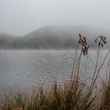
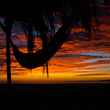



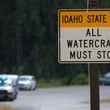
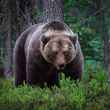



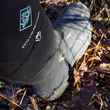




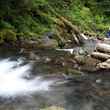
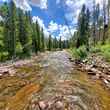


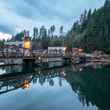
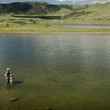
Comments